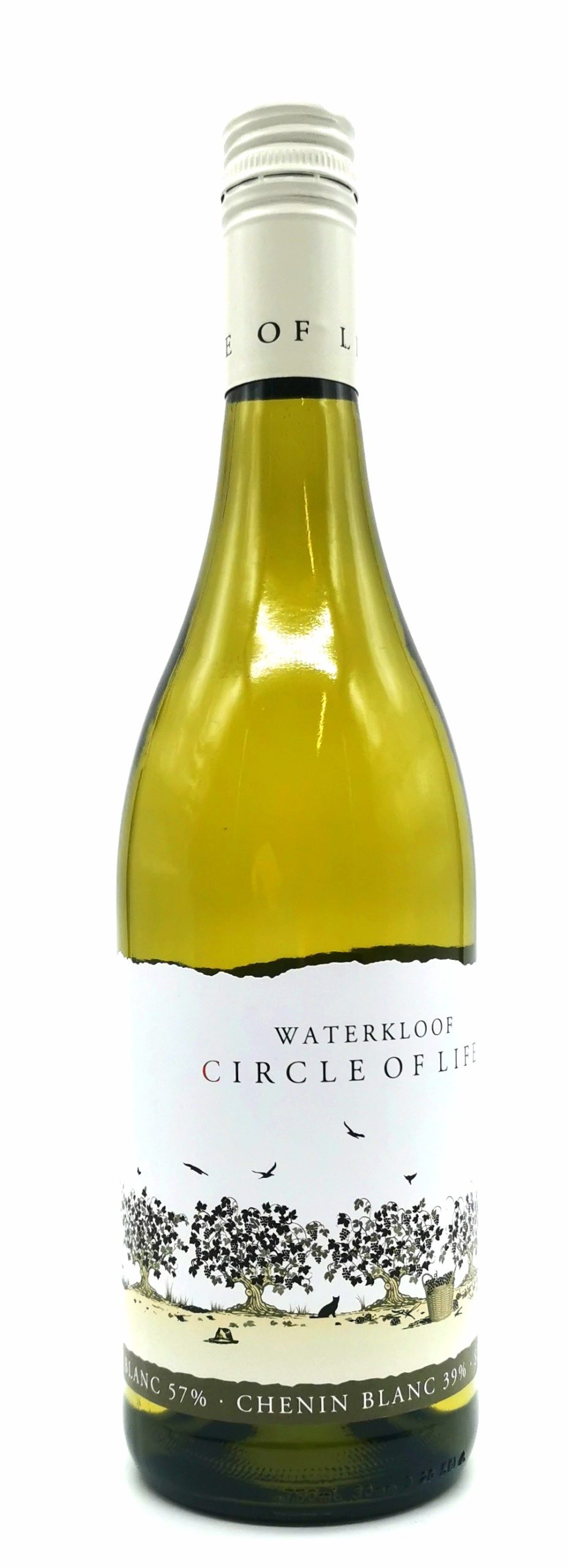T’S REALLY ALL ABOUT THE VINEYARDS
Circle of Life tells the story of Waterkloof: A once conventionally farmed vineyard with great potential, that – since Paul Boutinot took over the property – has been transformed into a living, breathing organic and biodynamic vineyard by Farm Manager Christiaan Loots and his team.
On Waterkloof we farm organic and biological, producing our own compost and microbial preparations. We then distribute these by utilising our draught horses, as opposed to heavy tractors. These practices ensure loose soil with more life, where the vines can spread their roots as they please; taking up everything they need from our rich and complex earth. We believe that regenerative farming helps to produce honest, terroir-driven wines that are truly made in the vineyard
Our focus has always been to get a better understanding of Waterkloof and the individual characters of its vineyard blocks. The Circumstance range allows these individual blocks and varietals to be expressed. Conversely, our objective with Circle of Life has been to produce two blends that encapsulate all the varying terroir characteristics and grape varietals found on Waterkloof. Thus, rather than being constrained by a traditional blending style, for example a Bordeaux or Rhône blend, we have instead produced two wines that are not driven by varietal, nor a specific parcel of the vineyard. Instead, they are a true reflection of the totality, philosophy and specificity of Waterkloof.
A GENTLE HAND
We mainly rely on tasting, to determine the optimum flavour development of the grapes. Bunches are picked early in the mornings, when they are still cool, which helps to preserve the flavours. Extracting juice from the grapes is achieved through whole-bunch pressing in our modern basket press. This is the most delicate way to extract the juice. No additions of enzymes or settling agents were made to the juice.
After a settling period of 24 hours, a large proportion of the juice was destined for co-fermentation. We determined a blend of Sauvignon Blanc and Chenin Blanc prior to fermentation which went into old 600-liter barrels- from where it fermented for four months. After the fermentation was completed the blend was racked to a stainless-steel tank to which we added the rest of the Sauvignon Blanc, Chenin Blanc and Semillon. To have the varietals integrate we decided to leave the blend in barrel on the fine lees until its bottling date six months later. This helped to add more complexity and weight to the palate. We produce the wine as naturally as possible, with no additions of acids or enzymes. The final blend is 59% Chenin Blanc, 29% Sauvignon Blanc and 12% Semillon
AND A FEW PRAYERS TO MOTHER NATURE: THE 2019/20 GROWING SEASON
For the past 4 years, the Western Cape has been experiencing a severe drought. During winter of 2019, we did welcome more rain than in the previous two years and were very blessed to receive over 500mm.
Budburst and flowering were earlier than usual, starting with the first buds at the beginning of September. Towards the end of the flowering season there was some rain, but fruit set was luckily still even.
The remainder of the growing season was ideal, with enough sunlight and not too much rain – which could lead to mildew. At the end of January, the south easterly wind did howl through the property, which led to a lot of leaf loss and even that of some grape bunches. Not much could be done to mitigate this, except to spend more time in the vineyards and divide the blocks into different sectors in preparation for harvest. We first removed fruit in risk of sunburn and monitored each block very closely.
Our 2020 harvest commenced on the 29th of January and reached full intensity from the 5th of February. The harvest conditions were positive with enough sun, not too much rain and only a few very hot days. The whites came in over a period of about 2 weeks, with the reds following immediately after – this made harvest logistics a little easier. All harvest dates were determined by taste in the vineyard, waiting to achieve the ideal balance between phenolic ripeness, potential alcohol and acid. In terms of yield, there was some variation but overall, we saw an increase of approximately 10% on 2019.
|








Reviews
There are no reviews yet.